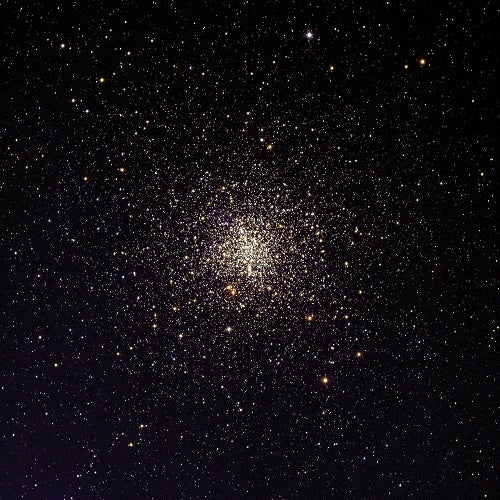A white dwarf has no energy source other than the heat left over from its birth. Just as a red-hot burner on your stove fades and cools when turned off, a white dwarf becomes steadily cooler and fainter as it ages. After 2 billion years, its surface temperature has dropped to 8,000 K and its luminosity has faded to 1/4,000 of the Sun’s. The white dwarf’s center has cooled to a point where the carbon and oxygen begin to crystallize. Five billion years later, the entire core of the star is crystalline: a true diamond in the sky — at a whopping 6 billion trillion trillion carats.
A white dwarf aged 15 billion years — that is, older than the current age of the universe — will cool its outer layers to a few thousand degrees, and its luminosity will drop to about 1/100,000 of the Sun’s. Its extremely dense, crystalline core will have cooled to where quantum mechanics dominates how the star continues to lose heat. Its crystal lattice cools quickly through a process known as Debye cooling; the white dwarf fades almost completely from sight. Although the term is not well-defined, we can safely call this cold, crystallized, and exceptionally dim star a black dwarf.
Such steady cooling makes white dwarfs useful tools for determining the ages of star clusters and even the Milky Way Galaxy. For example, a study of white dwarfs in open star cluster M67 found many white dwarfs with temperatures hotter than about 6,000 K, but none cooler than this. A white dwarf takes about 4 billion years to cool to 6,000 K, so we can conclude that the cluster is around 4 billion years old.
A similar search for white dwarfs in globular cluster M4 found a cluster age of 13 billion years, and searches for white dwarfs in the disk of the Milky Way give it an age less than 11 billion years, noticeably younger than the globular cluster.
A star cluster’s first white dwarfs are born from stars with relatively short main-sequence lives — about 50 million years. The progenitor’s life span is neglible when compared to the billions of years its remnants have existed.
White dwarf ages of star clusters have helped refine complicated models of stellar evolution, which then are used to study the ages of distant star clusters and even entire galaxies, where white dwarfs are far too faint to be seen. — KURTIS A. WILLIAMS, STEWARD OBSERVATORY, UNIVERSITY OF ARIZONA










